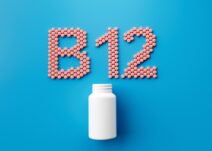With warmer temps leading to increased outdoor time, it’s important to stay sun smart to protect against the increased UV exposure that can lead to issues such as loss of elasticity, wrinkling, and even some cancers. Read on for key strategies and study-backed ingredients that can help consumers stay safe.
Skin-loving ingredients
Recently, we reported on The Trends Shaping the 2025 Dietary Supplements Market. Some of the same ingredients spotlighted as 2025 trends double as skincare essentials. Here, 11 standouts.
Astaxanthin: Oral astaxanthin supplements were studied and shown to protect skin from the damaging effects of chronic UV exposure. Other benefits include the reduction of bad cholesterol, immune support, cognitive support, heart and eye health.
Biotin: A popular B vitamin found in egg yolk, nuts, and mushrooms, biotin helps support skin health by helping to maintain its barrier.
Collagen: Excess sun exposure can lead to lower production of collagen. Collagen supplements can help ward off negative effects.
Carotenoids: Studies have long established this phytonutrient's ability to boost the skin’s aversion to sunburns.
Hyaluronic Acid (HA): Suitable for all skin types, topical HA offers deep skin hydration, slowing skin aging, relieving dry skin, and reducing wrinkles.
Omega-3: A lesser known superpower of omega-3 supplements are their protective qualities from UV rays. One study showed omega-3s help reduce UV-induced skin inflammation.
Probiotics: Studies have shown the effects of oral probiotic to support skin homeostasis and reverse negative effects of exposure to UV rays.
Vitamin B3 (nicotinamide): Support is building for the effectiveness of B3 against UV radiation.
Vitamin C: This powerful antioxidant offers acute UV damage protection when combined with sunscreen.
Vitamin E: Combining this antioxidant, found in some sunscreens, with vitamin C can offer good protection from UVB rays.
Zinc: A preferred option for sunscreen, zinc offers protection from UVA and UVB rays.
Sunscreen savvy
Liberally applying sunscreen to exposed skin and reapplying at least every two hours helps protect against sunburns, skin aging, and skin cancer (the most common form of cancer in the U.S., per the National Cancer Institute).
Yet while sunscreen is advised, many options can contain harmful ingredients. As researchers from the Albert Einstein College of Medicine caution: “Alongside the evidence for increasing levels of these agents in the environment, which leads to indirect exposure of wildlife and humans, recent studies suggest a toxicological nature for some of these agents.” They conclude: “Numerous studies raised concerns about the association between exposure to substances commonly found in sunscreens and endocrine and developmental impairments. In this review, the potential neurotoxicity of such substances is presented and the question of cost-benefit is raised regarding large scale use of sunscreen in its current composition.”
Topical products with natural, reef-safe ingredients and 100% mineral sunscreens with titanium dioxide and zinc oxide are preferred to fend off damaging rays, but also minimize the negative impact to the environment.
Hydration helpers
Consumers should prioritize hydration as a staple of summer skincare. It plays a pivotal role in skin’s protective barrier function, which is under stress during the summer. Staying on top of water consumption is essential all year long, and staying hydrated when the mercury rises helps regulate the body’s temperature, warding off overheating, dizziness, weakness, and muscle cramping, along with the skin benefits.
As a rule of thumb, experts recommend drinking 25% to 50% of your body weight in ounces of water per day. Choosing how to hydrate is also important. With the global hydration supplement market estimated to reach $82.7 billion by 2034, according to Future Market Insights, companies have been offering consumers a wide assortment of “enhanced” options including water and sports drinks with added electrolytes, mood and other health-boosting effects, as well as faster rehydration times. WF











